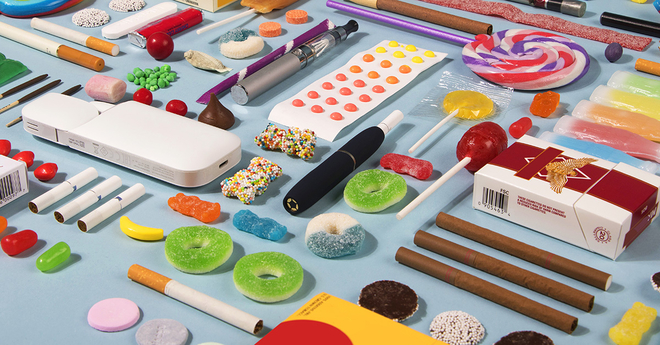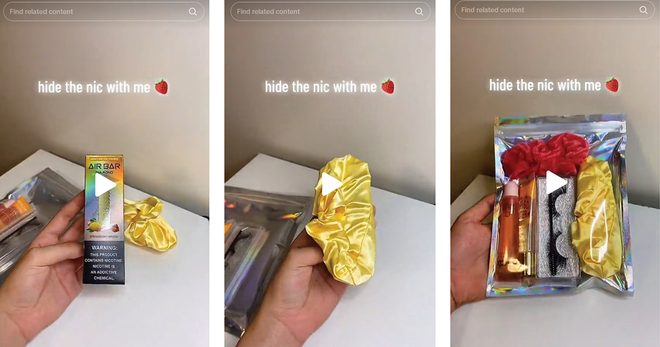A lot of youth think they aren’t vaping nicotine, but is that true?
Many youth e-cigarette users think they aren’t consuming nicotine when they vape, but the results of a new study suggest they may be unaware or misinformed about what is in their e-cigarettes because of unregulated labeling and marketing.
Ninety-nine percent of e-cigarettes sold in U.S. convenience stores, supermarkets and similar outlets in 2015 contained nicotine, according to a report from the U.S. Centers for Disease Control and Prevention. The findings, published in the American Journal of Public Health, are based on retail scanner data and categorized by product type (disposables, rechargeables and refills), flavors (flavored and non-flavored) and region (northeast, Midwest, south and west). Researchers found no difference across the categories in nicotine content.
The retail scanner data includes sales from convenience stores, supermarkets, mass merchandisers, drug, club and dollar stores and the Department of Defense commissaries, but did not include sales from tobacco specialty shops, “vape shops” or online sources, which may make up a significant portion of the U.S. e-cigarette market.
Although this study shows that nearly all e-cigarettes sold in regular retail stores contain nicotine, the majority of youth e-cigarette users think they vaped only flavoring, not nicotine, the last time they used a product, according to an annual national survey of 40,000 to 50,000 students from the University of Michigan’s 2016 Monitoring the Future study. Other research shows that youth are more likely to try flavored e-cigarettes, and believe that they are less harmful than tobacco-flavored e-cigarettes.
Youth e-cigarette use is a public health concern for several reasons, as highlighted in the 2016 Surgeon General report on e-cigarette use among youth and young adults:
- Nicotine is a highly addictive substance. Although most e-cigarettes are associated with lower levels of nicotine exposure and slower rates of uptake compared to cigarettes, some of them have the potential to be addictive in some users.
- Early nicotine addiction can harm brain development and alter nerve cell functioning, especially during fetal, early childhood and adolescent stages of development.
- Dual or polyuse, such as using e-cigarettes plus other tobacco products, is common among youth who use e-cigarettes. A Truth Initiative® study found that out of the youth who reported using e-cigarettes at any time in the last month, 63 percent of them had also used another tobacco product.
In 2015, 16 percent of high school students and 5.3 percent of middle school students used e-cigarettes, the most commonly used tobacco product among U.S. youth. This research provides further evidence that restrictions and warning labels for products containing nicotine are necessary to protect and inform youth. U.S. Food and Drug Administration tobacco regulations issued in 2016 that would require packages and advertisements for all tobacco products, including e-cigarettes, to have a nicotine warning label by May 2018 is currently undergoing a legal challenge.
Key takeaways
99% of e-cigarettes sold in U.S. convenience stores, supermarkets and similar outlets in 2015 contained nicotine



